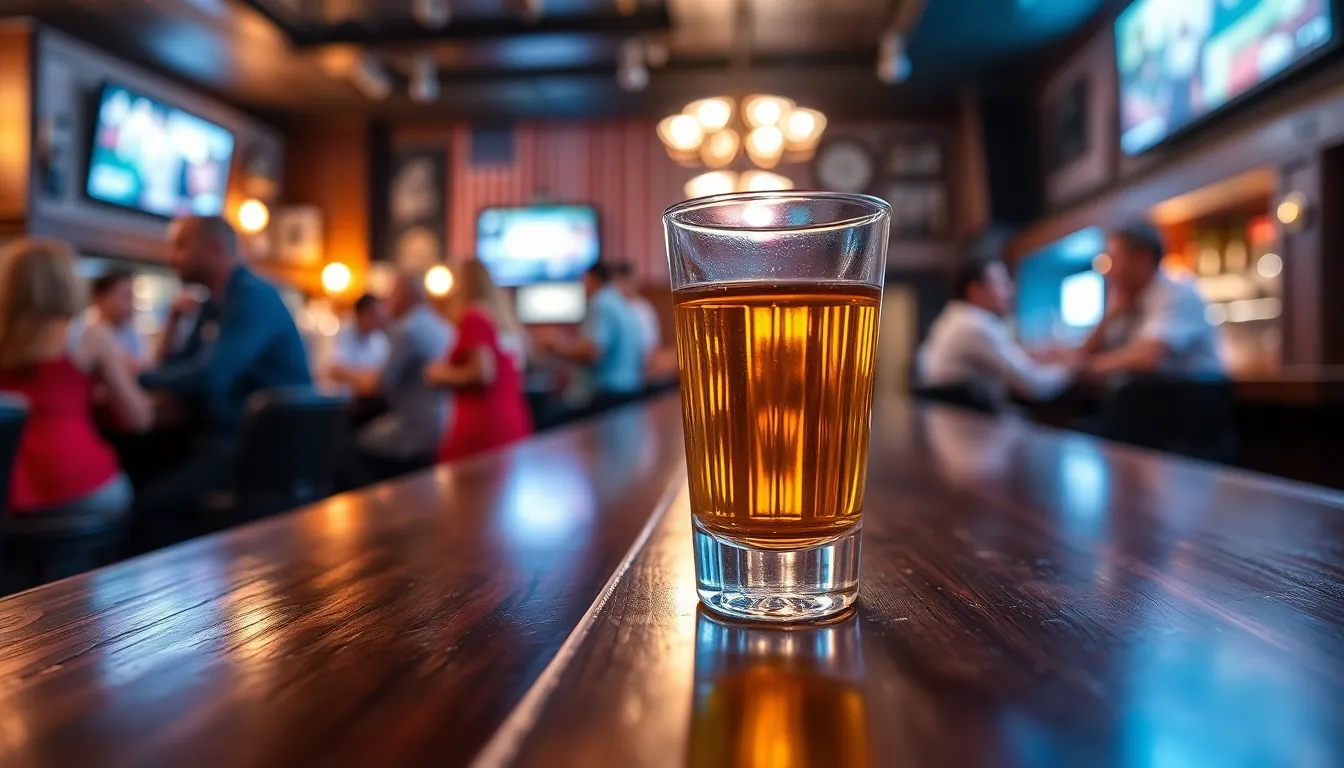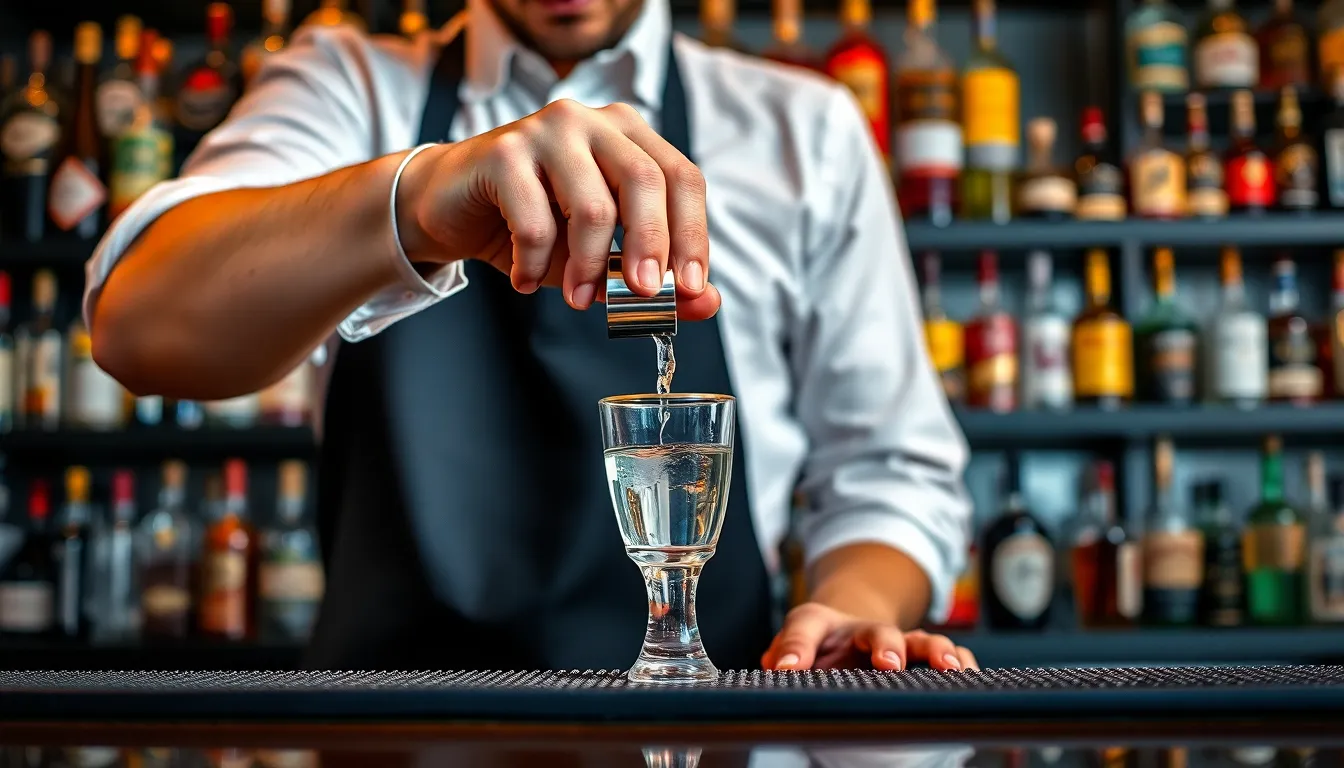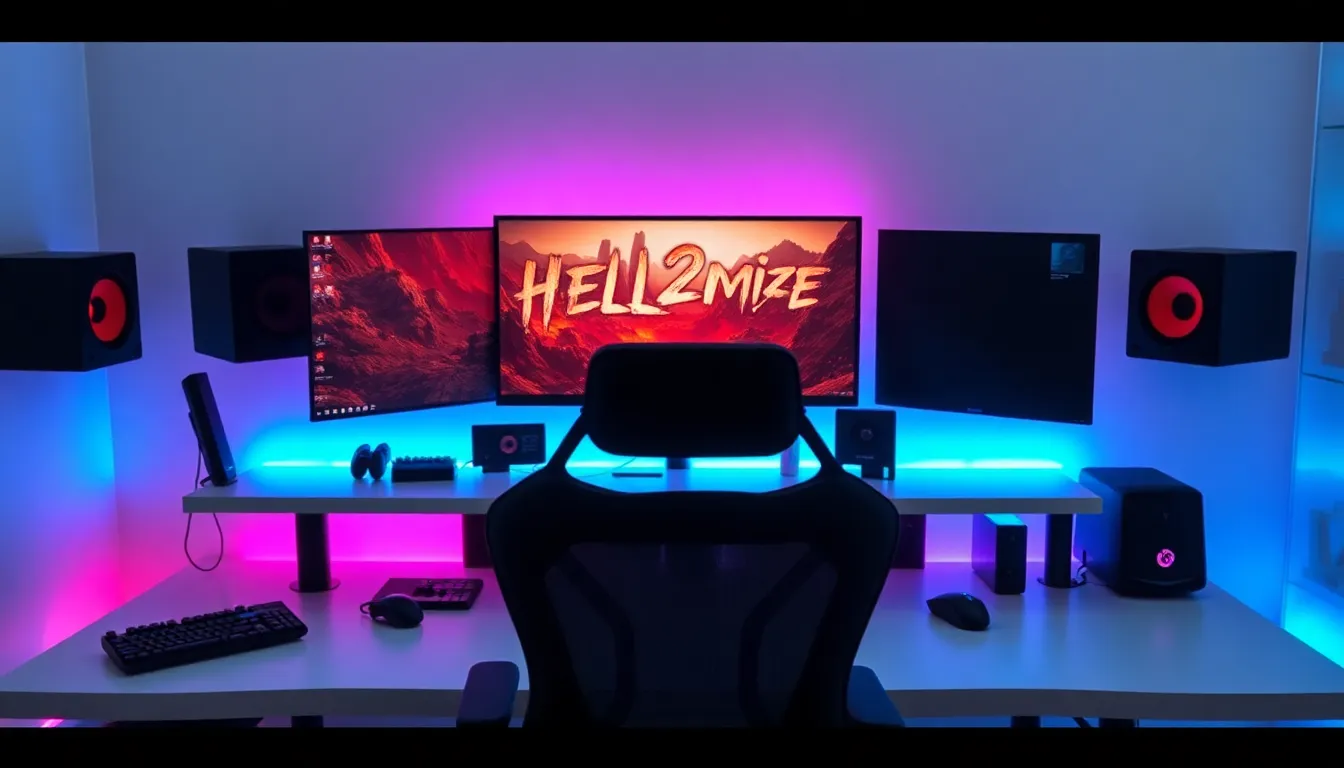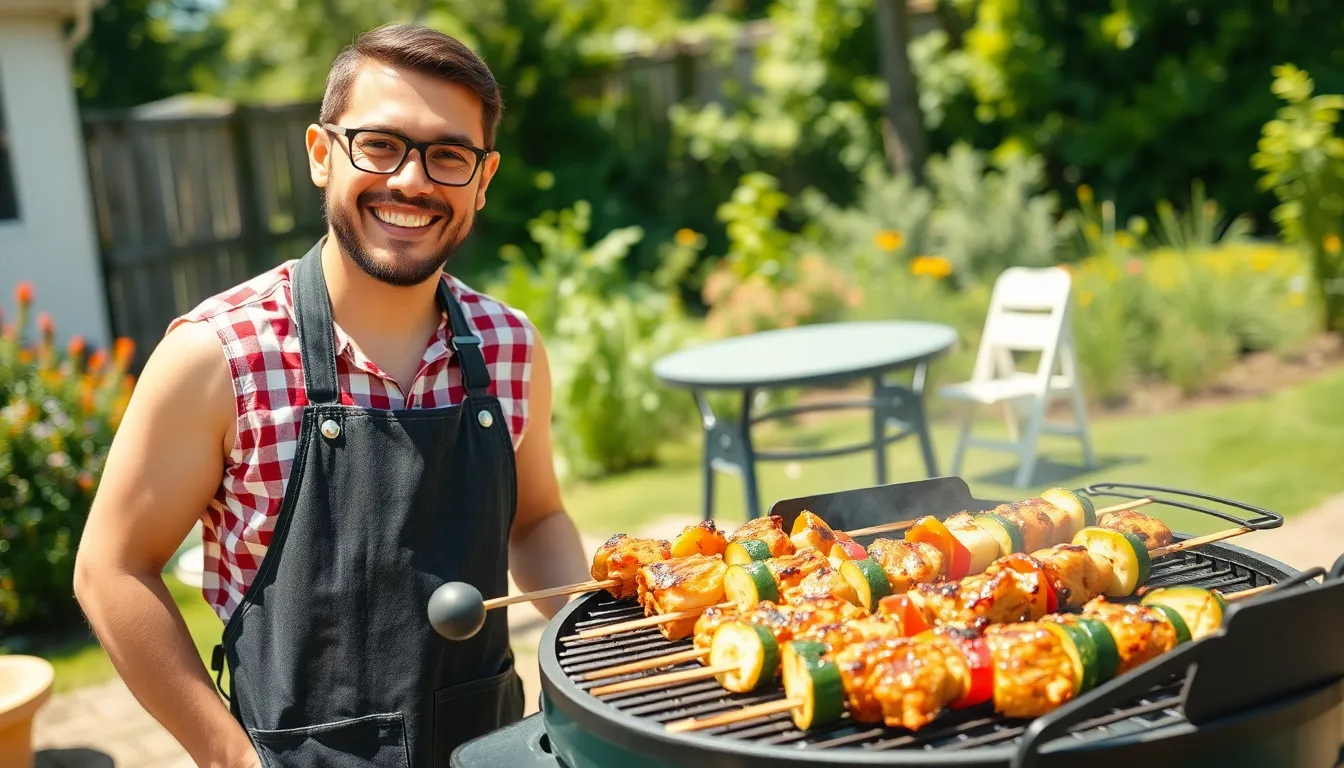When it comes to pouring the perfect drink, knowing how much is in a shot can make all the difference. Is it a generous pour or just a tease? In the world of spirits, a standard shot typically measures around 44 milliliters. But let’s be real, who actually measures that? Most people just rely on their bartender’s generosity—or lack thereof.
Table of Contents
ToggleUnderstanding Shots
Knowing the volume of a standard shot aids in drink preparation. A shot measures approximately 44 milliliters, which is often rounded to 1.5 ounces. This measurement remains consistent across many beverages, from cocktails to straight liquor. Understanding this standard ensures accurate drink proportions and helps avoid waste.
Bartenders typically use jiggers to achieve precise pours. These tools feature different measurements, allowing many variations in pour size. Some establishments may offer shots in varying sizes, but the standard shot remains widely recognized.
Measuring a shot helps maintain flavor balance in drinks. An accurate pour ensures the correct distribution of ingredients, enhancing the overall drinking experience. For those preparing drinks at home, knowing this measurement helps recreate bar-quality beverages.
Familiarity with shot sizes also plays a role in understanding alcohol consumption. It provides clarity on serving sizes, enabling individuals to consume responsibly. Awareness of shot measurements contributes to informed decisions regarding alcohol intake.
A standard shot equates to 44 milliliters. This measurement serves as a guideline for bartenders and home mixologists alike. Understanding shots ultimately fosters better drink preparation and consumption practices.
Standard Shot Measurements

Understanding standard shot measurements is essential for accurate drink preparation. Shots generally measure 44 milliliters or 1.5 ounces, though variations exist.
Common Shot Sizes
Common shot sizes include the standard shot, which is 44 milliliters. Many bars also offer a double shot, measuring 88 milliliters or 3 ounces. Other sizes, such as the nip and the pony shot, hold 30 milliliters and 15 milliliters respectively. Each size serves specific purposes in drink recipes, impacting flavor and alcohol content. Consistency in measuring these shots ensures balanced cocktails and responsible serving.
Differences by Country
Shot sizes vary substantially across countries. In the United States, the standard shot maintains a volume of 44 milliliters. However, in the UK, a typical shot is slightly larger at 25 milliliters or 35 milliliters, depending on the establishment. European nations often measure shots between 20 milliliters to 40 milliliters. Differences in regulations and local customs further influence these measurements, contributing to a diverse drinking culture worldwide.
Measuring Shots in Milliliters
Measuring shots accurately is essential for drink preparation and consistency. Shot sizes can vary by country, but understanding their equivalents in milliliters helps ensure proper proportions.
Conversion from Ounces to Milliliters
A standard shot of liquor equals approximately 1.5 ounces or 44 milliliters. For diverse cocktail recipes, knowledge of this conversion aids in maintaining flavor balance. To convert ounces to milliliters, multiply the ounce amount by 29.57. For example, a double shot, which is 3 ounces, converts to about 89 milliliters. Using this conversion promotes precision in drink recipes, enhancing the overall drinking experience.
Tools for Measuring Accurate Shots
Bartenders often rely on jiggers for precise measuring, with these tools typically featuring markings for common shot sizes. Jiggers provide an easy way to pour standard shots, double shots, and other measurements. Some also prefer using shot glasses, which are marked clearly for quick reference. Various other measuring devices, such as graduated cylinders, allow for accuracy in volume measurement. By utilizing these tools, both bartenders and home mixologists can ensure consistency and control in their beverages.
Factors Affecting Shot Size
Several factors influence shot sizes, including the type of alcoholic beverage and serving styles in bars and restaurants.
Types of Alcoholic Beverages
Spirits often come in standard shot sizes. For example, whiskey, vodka, and rum typically follow the 44 milliliters standard. Some liqueurs, however, may be served in smaller 30 milliliters nips. Cocktails generally contain varied shot measurements based on the recipe. For instance, a martini might use a larger pour, while a shot of tequila often matches the standard. These variations arise from the drink’s intended flavor profile and alcohol content.
Serving Styles in Bars and Restaurants
Different establishments adopt unique serving styles that impact shot sizes as well. Many bars stick to the standard pour of 44 milliliters for consistency. In high-end venues, bartenders may use precise jiggers for accuracy. Some bars offer unique experiences with larger or smaller shots that can emphasize flavor or promote special offerings. Local customs also play a significant role; places with a strong drinking culture may feature larger pours. Overall, understanding these serving styles enhances the drinking experience and informs consumers about their choices.
Knowing the measurement of a shot is essential for anyone interested in drink preparation. It not only ensures consistency in flavor but also enhances the overall experience. Understanding different shot sizes allows both bartenders and home mixologists to create balanced cocktails while promoting responsible drinking.
With variations in shot sizes across different countries and establishments, being informed about these differences can lead to more enjoyable drinking experiences. By utilizing tools like jiggers and shot glasses, individuals can master their pours and recreate bar-quality beverages at home. This knowledge empowers drinkers to make informed choices and appreciate the nuances of their favorite spirits.







